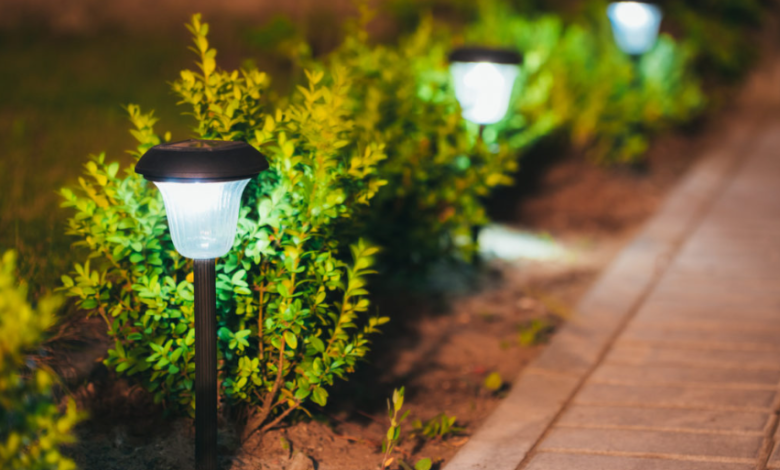Dusk to Dawn Outdoor Lights: Ultimate Guide to Brighten Your Nights

What Are Dusk to Dawn Outdoor Lights?
Dusk to dawn outdoor lights provide automatic illumination from evening to morning through built in light sensing technology. They remove the need for manual switching and ensure your home stays bright and secure throughout the night. These lights support consistent visibility and help create a safer exterior environment. Homeowners choose them for long term reliability low maintenance and strong performance in different weather conditions. You can use dusk to dawn outdoor lights on entryways porches pathways and open yard areas to maintain comfort and security from sunset to sunrise.
How They Work: Light Sensors and Automatic Operation
These lights use photocells or light sensors to detect natural daylight. When the environment becomes dark the sensor activates the light. When the sun rises the sensor turns it off. This smart response works without user input and supports efficient energy use.
Key Benefits of Using Dusk to Dawn Lights
The main advantage is convenience because the lights operate on their own. They also boost outdoor safety and help prevent accidents by improving nighttime visibility. Automatic lighting can also discourage intruders and protect outdoor areas. Long running LED or solar models support reduced energy consumption and lower electricity expenses.
See also: Unlock Your Home’s Potential: Blackout Curtains for Style and Privacy
Choosing the Right Dusk to Dawn Outdoor Lights
Types of Lights: LED Solar and Motion Sensor Options
LED models offer bright light long lifespan and low energy usage. Solar powered lights use panels to store energy during the day and run without wiring. Motion sensor lights combine dusk to dawn operation with movement detection for added security.
Brightness Levels and Coverage Area
Brightness is measured in lumens and determines how well an area is illuminated. Pathways require moderate brightness while driveways and open yards benefit from stronger coverage. Consider the beam angle and distance to ensure consistent lighting.
Weather Resistance and Durability
Outdoor fixtures must survive rain heat dust and seasonal changes. Look for waterproof ratings sturdy materials and corrosion resistant finishes. Durable casings protect internal components and help the lights last longer.
Energy Efficiency and Cost Savings
Comparing LED and Solar Options
LED lights consume less power and deliver strong brightness with minimal heat. Solar lights run entirely on stored sunlight which means zero electricity cost. Both options aim to reduce long term energy use.
Long Term Savings with Automatic Lighting
Automatic operation prevents waste because lights turn on only when needed. This reduces electricity bills and extends the lifespan of bulbs and sensors. Timely activation also keeps energy use predictable and manageable.
Installation and Placement Tips
Ideal Locations Around Your Home
Entry doors garages porches pathways backyards and perimeter fences are ideal spots. These areas gain improved visibility and safety with steady nighttime lighting.
Step by Step Installation Guide
Turn off power before installing wired lights. Mount the fixture in a secure location attach the wires match connections and install the bulb. For solar models choose a location with full daylight exposure and secure the panel at the recommended angle. Test the sensor after installation.
Common Installation Mistakes to Avoid
Avoid placing lights near bright street lamps or windows which can confuse sensors. Do not mount fixtures too low or too high. Keep solar panels away from shade and dirt.
Enhancing Security with Dusk to Dawn Lights
How Automatic Lighting Deters Intruders
Consistent lighting removes dark hiding spots and signals that the home is protected. Bright and steady illumination increases the chance of detection and reduces unwanted activity.
Integrating with Home Security Systems
You can connect these lights with cameras smart alarms and automated systems. When paired together they create stronger protection and quicker response to outdoor movement.
Maintenance and Longevity
Cleaning and Care Tips
Wipe sensors and lenses to keep them clear of dust. Check wiring connections and tighten loose screws. Remove debris around solar panels for steady charging.
Troubleshooting Common Issues
If the light stays on during the day check if sunlight reaches the sensor. If the light does not turn on at night inspect the bulb wiring or panel. Reset the sensor if needed.
Top Features to Look for in 2025
Smart Controls and Remote Access
Modern models support smartphone apps timers and voice control. These features allow easy adjustment from anywhere.
Motion Sensors and Adjustable Settings
Adjustable brightness timers and sensitivity settings help tailor the lighting to your space. Motion activation adds an extra layer of safety.
Weatherproof and Durable Designs
Strong housings shatter resistant lenses and waterproof ratings ensure long lifespan. These designs handle heat cold and moisture with ease.
Best Practices for Maximum Effectiveness
Layering Lights for Aesthetic and Security
Use multiple lights around entrances walkways and corners. Layered lighting creates balanced visibility and enhances outdoor appearance.
Optimizing Sensor Sensitivity and Timing
Set sensor ranges to avoid false triggers from passing cars or pets. Adjust timing to match your preferred brightness duration during the night.
Here place the second use of the keyword naturally in the center of the article to maintain balance and support ranking by mentioning dusk to dawn outdoor lights again in a helpful context.
Frequently Asked Questions (FAQ)
Are Dusk to Dawn Lights Worth It?
Yes they offer strong value through convenience energy savings and consistent nighttime safety.
How Much Energy Do They Consume?
LED models consume very little power and operate efficiently. Solar options use no electricity and provide maximum savings.
Can They Be Used Indoors?
They can work indoors if an area receives enough natural light for the sensor. However they perform best in open outdoor spaces.




